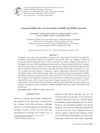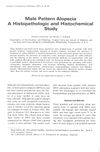Identification of Immune Microenvironment Changes, Immune-Related Pathways and Genes in Male Androgenetic Alopecia
March 2023
in “
Research Square (Research Square)
”
androgenetic alopecia AGA γδT cell central memory CD8+ T cell mast cell immature B cell activated CD8+ T cell effector memory CD4+ T cell eosinophil neutrophil innate immune system adaptive immune system cytokine signaling interferon-γ signaling interleukins signaling MMP9 PTPRC BMP2 THBS1 male pattern baldness gamma delta T cell CD8+ T cell B cell CD4+ T cell interferon-gamma signaling matrix metallopeptidase 9 protein tyrosine phosphatase receptor type C bone morphogenetic protein 2 thrombospondin 1

TLDR Immune changes and specific genes contribute to male hair loss.
The study "Identification of Immune Microenvironment Changes, Immune-Related Pathways and Genes in Male Androgenetic Alopecia" analyzed microarray gene expression data from male patients with Androgenetic Alopecia (AGA). The analysis revealed significant increases in the infiltration of certain immune cells (γδT cell, central memory CD8+ T cell, mast cell, immature B cell, activated CD8+ T cell, effector memory CD4+ T cell, eosinophil and neutrophil) in the bald scalp. The study also identified changes in immune-related pathways, including innate and adaptive immune systems, cytokine signaling, interferon-γ signaling, and interleukins signaling. Four hub immune-related genes (MMP9, PTPRC, BMP2 and THBS1) were found to be involved in the development and progression of hair loss in male AGA through interferon-γ signal pathways. These findings suggest that immune microenvironment changes contribute to AGA.















